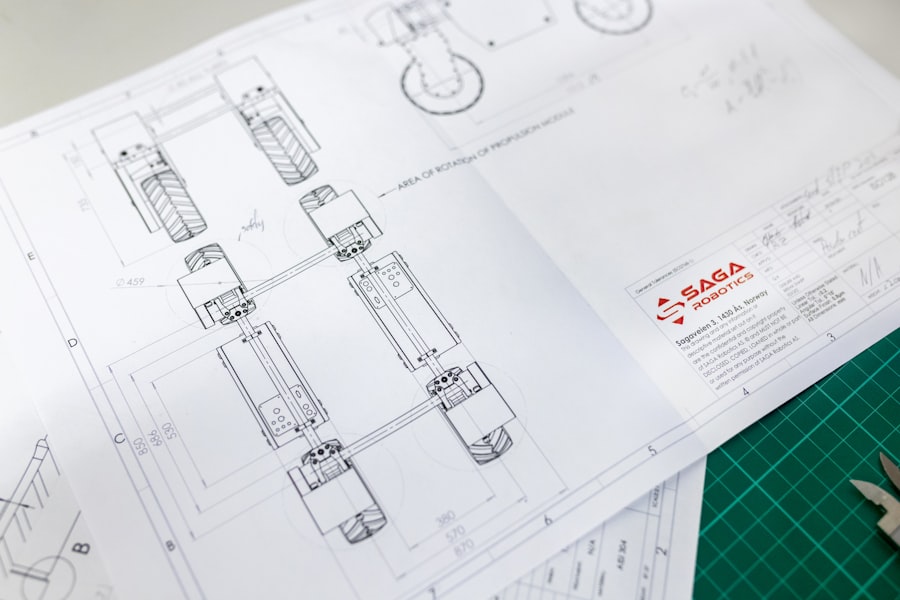Algorithms are the fundamental building blocks of programming, serving as a systematic approach to problem-solving. An algorithm is essentially a step-by-step procedure or formula for solving a problem. It can be expressed in various forms, including natural language, pseudocode, or flowcharts, but its core purpose remains the same: to provide a clear and unambiguous set of instructions that can be followed to achieve a desired outcome.
The importance of algorithms in programming cannot be overstated; they form the backbone of software development, guiding programmers in creating efficient and effective solutions. To illustrate the concept of algorithms, consider a simple example: sorting a list of numbers. There are numerous algorithms available for this task, each with its own advantages and disadvantages.
For instance, the bubble sort algorithm repeatedly steps through the list, compares adjacent elements, and swaps them if they are in the wrong order. While this method is straightforward and easy to understand, it is not the most efficient for large datasets. In contrast, more advanced algorithms like quicksort or mergesort utilize divide-and-conquer strategies to achieve better performance.
This example highlights how different algorithms can lead to varying levels of efficiency and effectiveness, underscoring the importance of selecting the right algorithm for a given problem.
Key Takeaways
- Algorithms are the foundation of programming and are essential for solving problems and creating efficient code.
- Flowcharts are a powerful tool for visualizing the logic of a program and can help programmers understand and communicate complex processes.
- Understanding the fundamentals of C program structure, syntax, and organization is crucial for writing clear and maintainable code.
- Decision making and loops are key components of C programming that allow for creating dynamic and responsive programs.
- Following best practices for writing efficient and readable code, such as using meaningful variable names and proper indentation, can improve code quality and maintainability.
- Effective troubleshooting and debugging strategies are essential for identifying and fixing errors in C programs, such as using debugging tools and carefully reviewing code for logic errors.
Creating Effective Flowcharts: Visualizing the Logic of a Program
Facilitating Collaboration and Understanding
This visual approach not only aids in understanding but also facilitates collaboration among team members who may have different levels of programming expertise.
Creating an Effective Flowchart
Creating an effective flowchart begins with clearly defining the problem and identifying the key steps involved in the solution. For example, if one were to design a flowchart for a simple ATM transaction process, it would start with the user inserting their card (represented by an oval), followed by a series of decision points (diamonds) that check for valid PIN entry and account balance.
Identifying Pitfalls and Inefficiencies
Each decision would lead to different paths: if the PIN is correct and sufficient funds are available, the process continues to dispense cash; otherwise, it may loop back to prompt the user for input again or terminate the transaction. This structured visualization not only clarifies the logic but also helps identify potential pitfalls or inefficiencies in the process before any code is written.
The Fundamentals of C Program Structure: Syntax and Organization

C programming language is renowned for its efficiency and control over system resources, making it a popular choice for system-level programming. Understanding the structure of a C program is crucial for both novice and experienced programmers alike. A typical C program consists of several key components: preprocessor directives, function definitions, variable declarations, and executable statements.
The organization of these elements follows a specific syntax that must be adhered to in order for the program to compile and run successfully. At the beginning of a C program, preprocessor directives such as `#include
Within this function, programmers declare variables that will hold data during execution. For instance, `int main() { int number; }` declares an integer variable named `number`. The body of the `main()` function contains executable statements that define what actions the program will perform.
Proper indentation and use of braces `{}` are essential for maintaining readability and ensuring that blocks of code are correctly associated with their respective control structures.
Implementing Decision Making and Loops in C Programming
| Topic | Description |
|---|---|
| Decision Making | Using if, else if, and else statements to make decisions based on conditions. |
| Logical Operators | Using logical operators such as && (and), || (or), and ! (not) to combine and negate conditions. |
| Switch Statement | Using switch statement to select one of many code blocks to be executed. |
| Loops | Using for, while, and do-while loops to execute a block of code repeatedly based on a condition. |
| Break and Continue | Using break to exit a loop and continue to skip the current iteration and continue to the next iteration. |
Decision-making constructs and loops are integral components of C programming that allow developers to create dynamic and responsive applications. Decision-making is primarily achieved through conditional statements such as `if`, `else if`, and `switch`. These constructs enable the program to execute different code paths based on specific conditions.
For example, an `if` statement can be used to check whether a user’s input meets certain criteria before proceeding with further operations.
Loops, on the other hand, facilitate repetitive execution of code blocks until a specified condition is met.
C provides several types of loops: `for`, `while`, and `do-while`. The `for` loop is particularly useful when the number of iterations is known beforehand; for instance, iterating through an array to calculate its sum can be efficiently accomplished using a `for` loop. Conversely, `while` loops are ideal when the number of iterations is not predetermined but depends on user input or other runtime conditions.
A classic example is prompting a user for input until they provide a valid response. By combining decision-making constructs with loops, programmers can create robust applications capable of handling various scenarios and user interactions.
Best Practices for Writing Efficient and Readable Code
Writing efficient and readable code is paramount in software development, as it not only enhances performance but also makes maintenance easier over time. One of the best practices is to use meaningful variable names that convey their purpose within the program. For instance, instead of naming a variable `x`, using descriptive names like `totalSales` or `userAge` provides clarity about what data is being stored.
This practice significantly improves code readability and helps other developers (or even oneself at a later date) understand the logic without extensive comments. Another important aspect is modular programming, which involves breaking down complex problems into smaller, manageable functions or modules. Each function should ideally perform a single task or operation, making it easier to test and debug independently.
For example, if a program requires both input validation and data processing, creating separate functions for each task allows for focused testing and reduces interdependencies that can complicate debugging efforts. Additionally, adhering to consistent formatting conventions—such as indentation levels, spacing around operators, and comment usage—further enhances code readability and maintainability.
Troubleshooting and Debugging: Strategies for Identifying and Fixing Errors in C Programs

Troubleshooting and debugging are critical skills for any programmer working in C or any other language. Errors can arise from various sources—syntax errors due to typos or incorrect formatting, logical errors where the code runs without crashing but produces incorrect results, or runtime errors that occur during execution due to invalid operations or memory issues. Identifying these errors requires a systematic approach that combines analytical thinking with practical debugging techniques.
One effective strategy for debugging is to use print statements strategically throughout the code to track variable values and program flow at different execution points. By inserting statements like `printf(“Value of x: %d\n”, x);`, developers can gain insights into how data changes over time and where things might be going awry. Additionally, utilizing debugging tools such as GDB (GNU Debugger) allows programmers to step through their code line by line, inspect variable states at runtime, and set breakpoints to halt execution at critical points for closer examination.
Another essential aspect of debugging is understanding common pitfalls associated with C programming, such as memory leaks or buffer overflows. Employing tools like Valgrind can help detect memory-related issues by monitoring memory allocation and deallocation during program execution. Furthermore, writing unit tests can proactively catch errors before they escalate into larger issues by validating individual components of the code against expected outcomes.
By adopting these strategies and maintaining a methodical approach to troubleshooting, programmers can effectively identify and resolve errors in their C programs, leading to more robust software solutions.
If you’re looking to add some greenery to your home, you may want to check out this article on com/top-10-houseplants-for-your-home-easy-care-greenery/’>top 10 houseplants for your home.
Just like mastering the basics of algorithms and flowcharts, taking care of houseplants requires understanding the structure and needs of each plant. This article provides valuable information on easy-care greenery options that can thrive in your indoor spaces.
FAQs
What are algorithms?
Algorithms are step-by-step procedures or formulas for solving a problem or accomplishing a task. They are used in computer programming to perform specific tasks or calculations.
What are flowcharts?
Flowcharts are visual representations of a process or algorithm. They use different shapes and arrows to illustrate the steps of a process, making it easier to understand and analyze.
What is the structure of a C program?
A C program typically consists of a series of functions, which are blocks of code that perform specific tasks. The main function is the entry point of the program, and it calls other functions to execute the desired operations.
How are algorithms and flowcharts related?
Algorithms and flowcharts are related in that a flowchart can be used to visually represent the steps of an algorithm. Flowcharts provide a way to visualize the logic and flow of an algorithm, making it easier to understand and analyze.
Why is it important to master algorithms, flowcharts, and the structure of a C program?
Mastering algorithms, flowcharts, and the structure of a C program is important for anyone interested in computer programming. These concepts provide a foundation for understanding how to design and implement efficient and effective solutions to a wide range of problems.





















+ There are no comments
Add yours